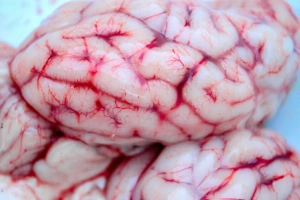Symbols of the Mind: Understanding the Meaning Behind Psychology’s Icons
Introduction
Psychology, as a fascinating field, has provided profound insights into the complexities of the human mind. Throughout its history, various symbols have emerged to encapsulate key concepts, theories, and practices. These symbols often serve as shorthand for intricate ideas, making them accessible and recognizable. Understanding these symbols not only enriches our understanding of psychology but also illuminates the cultural context within which these ideas flourish. This article will explore some of the most significant symbols of psychology, shedding light on their meanings and implications.
The Human Mind: A Complex Symbol
At the heart of psychology is the human mind, often depicted as a labyrinth or a puzzle. This imagery reflects the intricate and multifaceted nature of mental processes. The idea of the mind as a labyrinth suggests that there are numerous paths to understanding human behavior, and it often raises questions about direction, clarity, and purpose in psychological inquiry.
Furthermore, the labyrinth symbolizes the journey that individuals undertake in understanding themselves and navigating life’s challenges. Psychological therapies often aim to guide patients through their own labyrinths, helping them to find their way toward greater self-awareness and emotional well-being.
The Brain: The Organ of Thought and Emotion
The brain is perhaps the most emblematic symbol of psychology, serving as a literal representation of the study of the mind. It embodies the relationship between biological mechanisms and psychological experiences. Advanced imaging technologies like fMRI and PET scans have deepened our understanding of how various brain regions correlate with specific cognitive functions and emotional responses.
The brain’s hemispheres have also become symbolic of different modes of thinking: the left hemisphere is often associated with logic and analytical thought, while the right hemisphere is linked to creativity and intuition. This division has influenced various psychological theories, although contemporary neuroscience emphasizes the interconnectivity of brain functions.
The Psyche: Carl Jung’s Archetypes
Carl Jung’s concept of the psyche includes a wide range of symbols that represent universal human experiences. Jung proposed that the psyche is composed of different components, including the ego, personal unconscious, and collective unconscious. Symbols like the “anima” and “animus” represent the feminine and masculine aspects within individuals, respectively.
Jung’s use of symbols extends to the idea of archetypes, which are recurring motifs that appear across cultures in myths, dreams, and art. The hero, the mother, the wise old man—these archetypes provide a framework for understanding human behavior and aspiration. Jung’s emphasis on symbols underscores the importance of cultural and personal narratives in shaping psychological experiences and identity.
The Tree of Life: A Symbol of Growth and Development
In developmental psychology, the Tree of Life symbol serves as a powerful metaphor for human growth and maturation. This symbol reflects the interconnectedness of various aspects of life, including family, environment, culture, and individual experiences. Each branch represents different life stages, while the roots symbolize foundational experiences and the influences that shape an individual.
This metaphor resonates particularly with theories of lifespan development, which focus on how people evolve not only in childhood but throughout their entire lives. The Tree of Life encapsulates the idea that development is a dynamic process, influenced by both internal and external factors, and that every person’s journey is unique.
The Butterfly: Transformation and Change
The butterfly is a potent symbol of transformation, often used in psychology to represent personal growth and change. The metamorphosis of a caterpillar into a butterfly mirrors the psychological processes of healing, self-discovery, and the emergence of a new self.
In therapeutic contexts, the butterfly symbolizes resilience and the capacity to transcend adversity. Many therapeutic approaches, including narrative therapy and cognitive-behavioral therapy (CBT), emphasize the potential for individuals to undergo profound changes in their thoughts, feelings, and behaviors, much like the transformation experienced by a butterfly.
The Yin and Yang: Balance and Duality
Originating from Taoist philosophy, the Yin and Yang symbol represents the duality and balance inherent in human experiences. In psychological terms, it reflects the interplay between opposing forces, such as light and darkness, rationality and emotion, and individuality and community.
This symbol can be applied to various psychological constructs, including the integration of conflicting aspects of the self. Therapies that emphasize balancing different parts of the personality can help individuals achieve a more holistic understanding of themselves. The Yin and Yang serves as a reminder that a harmonious life involves embracing both sides of our nature, fostering acceptance and understanding.
The Mask: Facades and Authenticity
In psychology, the mask symbolizes the personas that individuals adopt to navigate social interactions and protect their vulnerabilities. This concept aligns with the psychological idea of “masking,” wherein people present a curated version of themselves to the outside world, often concealing their true emotions and thoughts.
The mask is particularly relevant in discussions of identity, self-presentation, and social anxiety. In therapy, the process of unmasking can be crucial for fostering authenticity and self-acceptance. Psychologists may help clients explore their relationships with their masks, understanding when and why they wear them and what this means for their sense of self.
The Spiral: Growth Through Cycles
The spiral, often associated with growth and evolution, symbolizes the journey of self-discovery and personal development. Unlike linear symbols, the spiral illustrates that growth is not a straightforward process; rather, it involves revisiting and reflecting upon past experiences while moving forward.
In therapeutic contexts, the spiral can represent the cyclical nature of healing. As individuals engage in therapy, they are likely to revisit similar themes and challenges, each time gaining deeper insights and understanding. This perspective encourages patience with the process of growth, emphasizing that setbacks and regressions are a natural part of the journey.
Conclusion
The symbols of psychology serve as powerful tools for understanding the complexity of the human mind and behavior. Whether through the lens of the brain, the labyrinth of the psyche, or the transformative nature of the butterfly, these icons encapsulate fundamental concepts that resonate across cultures and disciplines. By unpacking these symbols, we can gain a richer understanding of the psychological landscape, enhancing both our personal growth and our appreciation for the multifaceted nature of human experience.
In addition, these symbols can foster greater communication between mental health professionals and the public, making psychological concepts more accessible. Engaging with these symbols allows individuals to connect with their own narratives, facilitating understanding and acceptance of their psychological journeys.
As we continue to explore the depths of the mind, let us not forget the symbols that illuminate our path, guiding us through the complexities of psychology and the intricacies of human existence.
References
- Jung, C. G. (1964). Man and His Symbols. Aldus Books.
- Rogers, C. R. (1961). On Becoming a Person: A Therapist’s View of Psychotherapy. Houghton Mifflin Harcourt.
- Freud, S. (1955). The Interpretation of Dreams. Basic Books.
- Maslow, A. H. (1954). Motivation and Personality. Harper & Row.
- Beck, A. T. (1976). Cognitive Therapy and the Emotional Disorders. New American Library.
- Kuhl, J., & Beckmann, J. (1994). A theory of action control: The influence of self-regulatory mechanisms on performance. In G. V. Caprara & G. D. Lemaire (Eds.), Theories of behavior. Kluwer Academic Publishers.
This article provided an overview of symbols in psychology while also inviting reflection on how these symbols shape our understanding of the mind and behavior. The interplay between symbols and psychological concepts makes for a rich field of study that continues to evolve.


























Add Comment